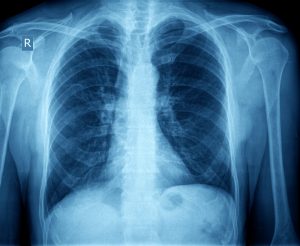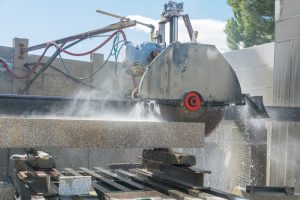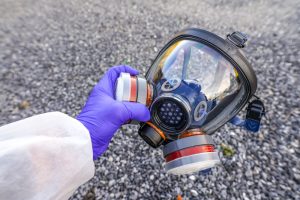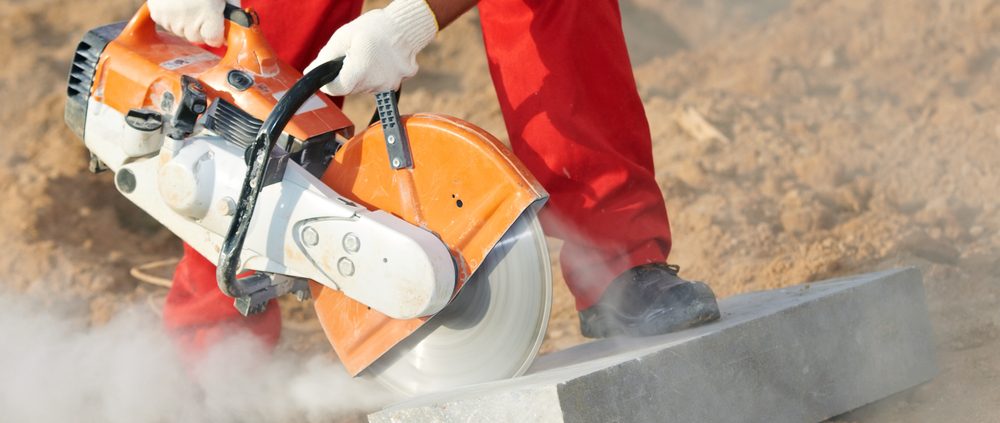Reducing exposure to silica dust during construction activities
Silica dust exposure and silicosis have become an increasing concern in the construction and stone manufacturing industry, and its effects are often fatal. One Brisbane physician Dr. Graeme Edwards who has tested the lungs of hundreds of stone workers, said:
“From a clinician’s perspective this is worse than asbestos, because asbestos affects people at the end of their working life and into their retirement – where this particular disease is affecting young workers, people with dependent children, with wives and a whole working life expectation before them”. *
It is vital that employers understand the causes of silicosis, in order to recognize and manage the risk of silica dust exposure in their workplace. Employers should also provide health monitoring to their workers and ensure the workplace exposure standard for crystalline silica is not exceeded. Below are some practical information for employers in managing the risks of silica dust exposure in their workplace.
What work activities can generate silica dust?
Crystalline silica (or quartz) is a common mineral found in many construction materials such as concrete, fiber-cement sheeting, mortar, pavers, tiles, as well as natural and engineered stone used for benchtops.

Silica is commonly found in stone benchtops and many construction materials
Working with silica products, such as cutting, grinding, sanding, drilling, loading or demolishing, can generate respirable particles of crystalline silica dusts. Construction activities such as excavation, mining, tunnelling and abrasive blasting can also generate crystalline silica dust. These harmful silica dusts are small enough to be inhaled into the lungs and can be so tiny that they are invisible.

Dry cutting silica products can generate harmful silica dusts
What diseases can silica dust cause?

When a worker is exposed to and inhales crystalline silica dust, they could develop:
• Chronic bronchitis
• Emphysema
• Silicosis
• Lung cancer
• Kidney damage or scleroderma
All the above pose a high risk to workers. Silicosis occurs when crystalline silica dusts enter the lungs and causes scarring, inflammation and an outpouring of protein into the lung. It can range from acute where the worker experience short exposure to high levels on silica dust, to chronic where the worker is exposed to lower levels of silica dusts but over long term.

All forms of silicosis, whether acute or chronic long term, is incurable as the lung damage is irreversible and often leads to terminal lung disease. Symptoms of silicosis include shortness of breath, coughing, fatigue and weight loss. In severe cases the damage caused by silicosis can require the worker to have a lung transplant or may lead to death.
Reducing the risk of silica dust exposure
Employers should apply the hierarchy of control when managing the risk of silica dust in their workplace according to the following order:
- Elimination or substitution of the risk of silica dust generation – by avoiding the use of silica products or using products with a lower amounts of silica
- Isolation – using safe work designs to isolate areas for tasks that generate silica dusts and ensuring worker exposure to these areas is minimised via the use of automation or enclosures
- Using engineering controls to minimise the risk of exposure to silica dust – for example by using tools with dust collection attachment, employing local exhaust ventilation or making use of water suppression
- Should a risk still remain after applying the above, then administrative controls can be applied – such as ordering the right amount of material to ensure less cutting and good housekeeping policies (such as wet sweeping etc.)
- Should a risk still remain, Personal Protective Equipment (PPE) should be used to control the risk of silica dust.
It is recommended that more than one control be used to effectively manage risks to workers.

Automation and water suppression can help control silica dust generation
By law, certain controls must be applied when power tools are used on engineered stone. Power tools must not be used to cut, grind or abrasively polish engineered stone unless the tools:
- Have an integrated water delivery system that supplies a continuous feed of water (on-tool water suppression) or
- Are fitted with extraction attached to a HEPA filtered dust class H vacuum cleaner (or similar system that captures the dust generated).
If the above controls are not reasonably practicable, then employers must control the use of power tools through local exhaust ventilation (LEV). Sometimes workers may need to use both water suppression and LEV to reduce dust formation. Dry cutting and processing of silica products can generate very high levels of crystalline silica and should be avoided.
Safeguarding workers from silica dust
You should not rely solely on PPE to protect workers from silica dust as it does not prevent silica dust from becoming airborne. PPE should only be considered after implementing substitution, isolation, engineering and administrative controls. It should only be used to supplement higher order control measures or when no other safety measures can be utilised.
It is important to choose the right type and fitting of PPE to protect workers from the risk of inhaling silica dust. The PPE used must be in good working condition and clean. Employers need to ensure that their workers are trained and given information on how to use, clean and store the PPE provided.
Examples of PPE that can be used are:
- Respiratory protective equipment
- Work clothing that does not collect dust (such as apron, footwear and gloves)
- Eye protection
- Hard hats
- Personal hearing protection

A full face respirator must be properly fitted for adequate silica dust protection
Air and health monitoring
By law employers must carry out air monitoring if:
- They are not sure if their employees are exposed to levels of silica dusts that are above the exposure standard, or
- They can’t work out if there’s a risk to employee health without air monitoring
Due to the high silica content in engineered stone, it is recommended that employers provide both health and air monitoring to all employees who work in the vicinity of engineered stone processing work.
More information can be found from Safe Work Australia: https://www.safeworkaustralia.gov.au/choosing-and-implementing-control-measures-silica-dust
References
*Horn, A., 21 Feb 2019, “Silicosis death dust audit reveals ‘major epidemic worse than asbestos”, ABC News, https://www.abc.net.au/news/2019-02-21/silicosis-death-dust-audit-reveals-major-epidemic-worse-asbestos/10830452.
WorkSafe Victoria, Dec 2019, “Information about working with Engineered Stone”, 3rd Ed.











